Cheap Trident: 1985 Maserati Biturbo
Sean Rooks | August 15, 2025
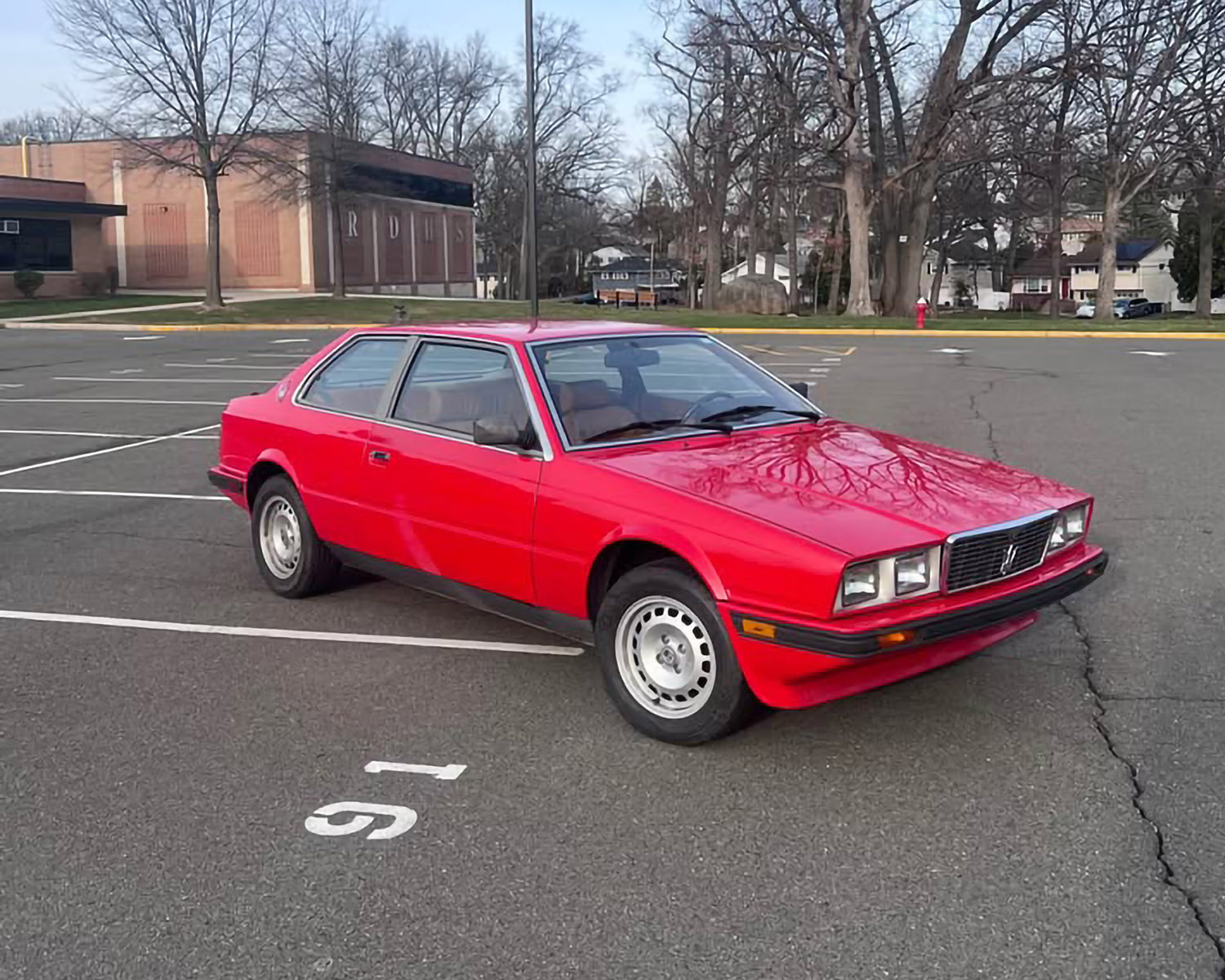
Despite the post-pandemic dip in the collector car market, most classics are still much more expensive than they were 10 years ago. I appreciate that this could lead many to think the car hobby has become too expensive to join. I say “hogwash,” and that while loads of us may no longer be able to afford an air-cooled Porsche or a gated-manual Ferrari, there are many attainable classics to consider, especially if your tastes skew to the unusual. In today’s Good Find Friday, I’m featuring just one of those cars: a Maserati Biturbo.
Maserati Biturbo/Ghibli/Shamal
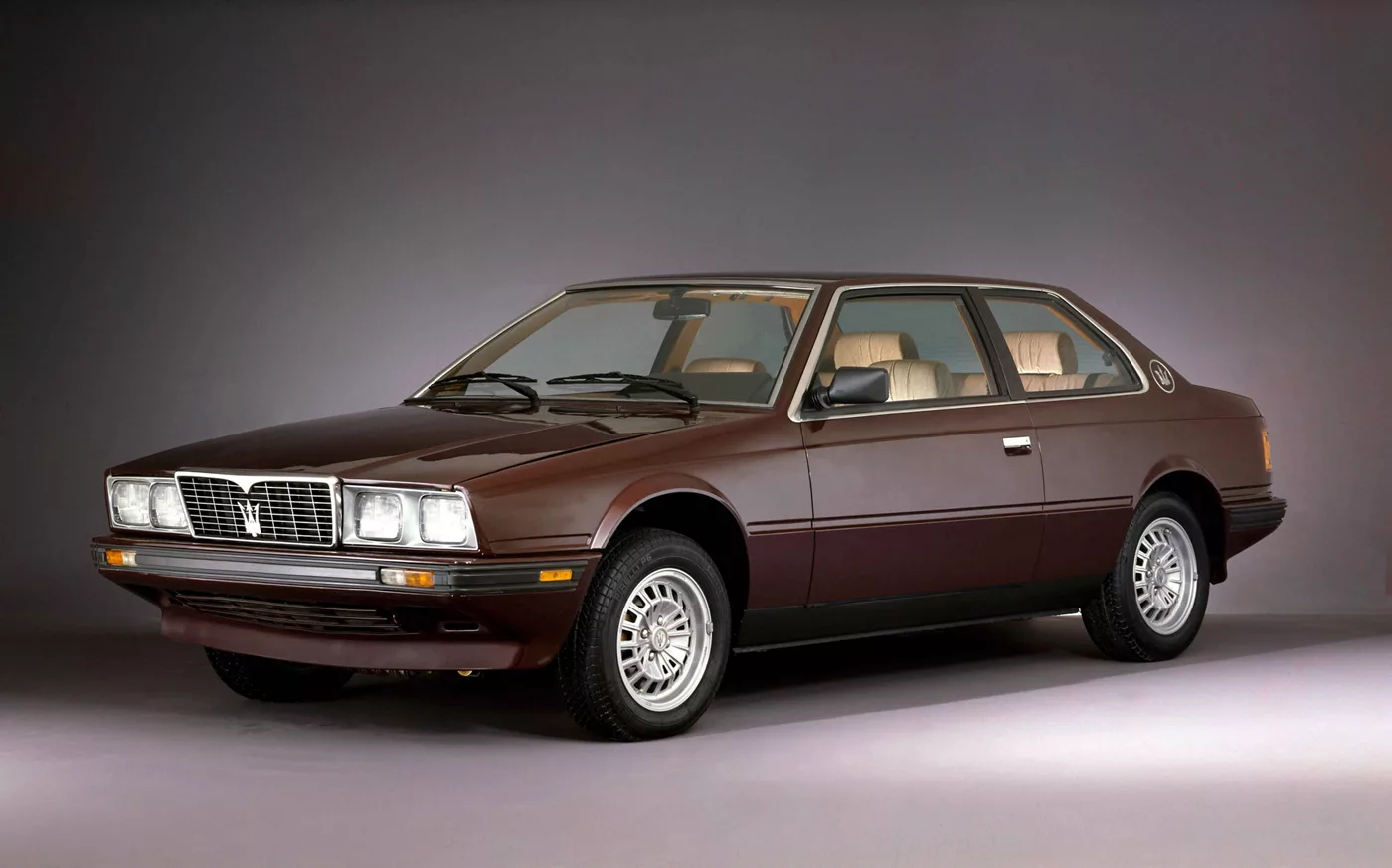
Lots of car guys know that Maserati was at one time owned by the French car marker Citroën. Before Fiat assumed control of the brand in 1993, it was actually under the control of De Tomaso, builder of icons like the Pantera and Mangusta.
The Maserati Biturbo was one of the first vehicles produced under De Tomaso ownership and it was built with the intent to make Maserati more affordable. A good place to start with cost reduction is the design phase, and the Biturbo’s look was defined by the chief designer of Centro Stile Maserati. The styling was widely panned by enthusiasts of Maserati’s prior sexy, fastback cars like the Khamsin or Bora. Featuring a more standard three-box shape, the Biturbo was much more of a standard car in appearance, though it did echo the design of the Quattroporte III and the Maserati Kyalami.
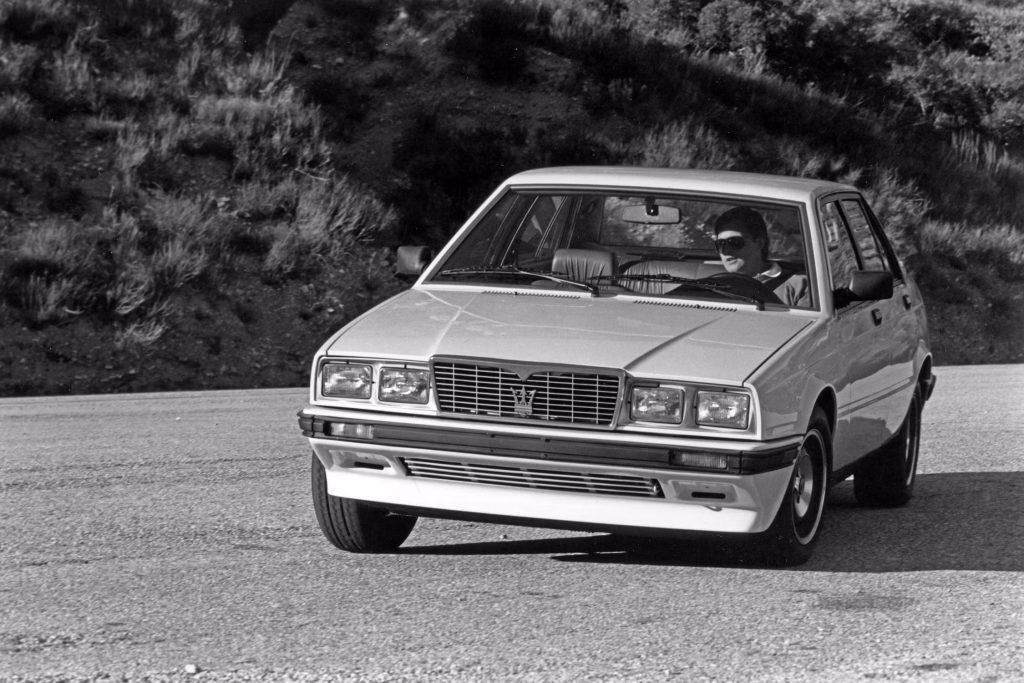
The chassis was a steel unibody and the packaging resulted in some real pluses, such as a roomy trunk, four adult-sized seats, and a suspension setup that featured MacPherson front struts and semi-trailing arm suspension at the rear. The interior remained lavishly appointed with sumptuous leather seating, wood trim and the ever-present clock. These changes positioned the car well against competitors such as the BMW 3-series.
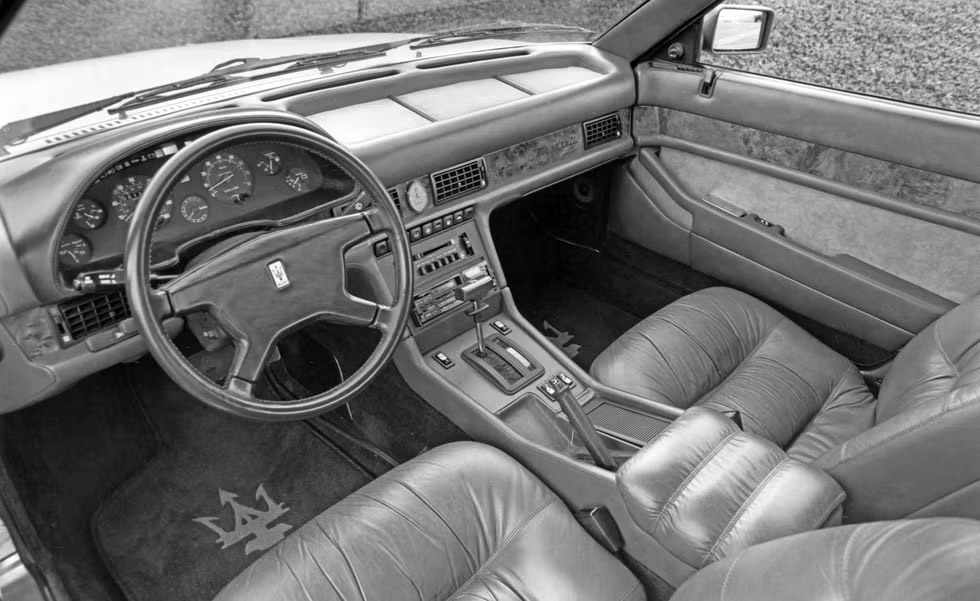
Power came from a twin-turbocharged single overhead cam V6 derived from the Merak. It was internally downspec’ed a bit from the Merak’s engine, but it did add two IHI turbochargers, a first for a production automobile. The engine produced 180hp and delivered a 0-60 time of 7 seconds. While not blistering, it’s pretty respectable for the time and bested the BMW 325i. The car sold like hot-cakes initially — especially in Italy — but sales cooled quickly, partly due to the notorious reliability issues faced by owners.
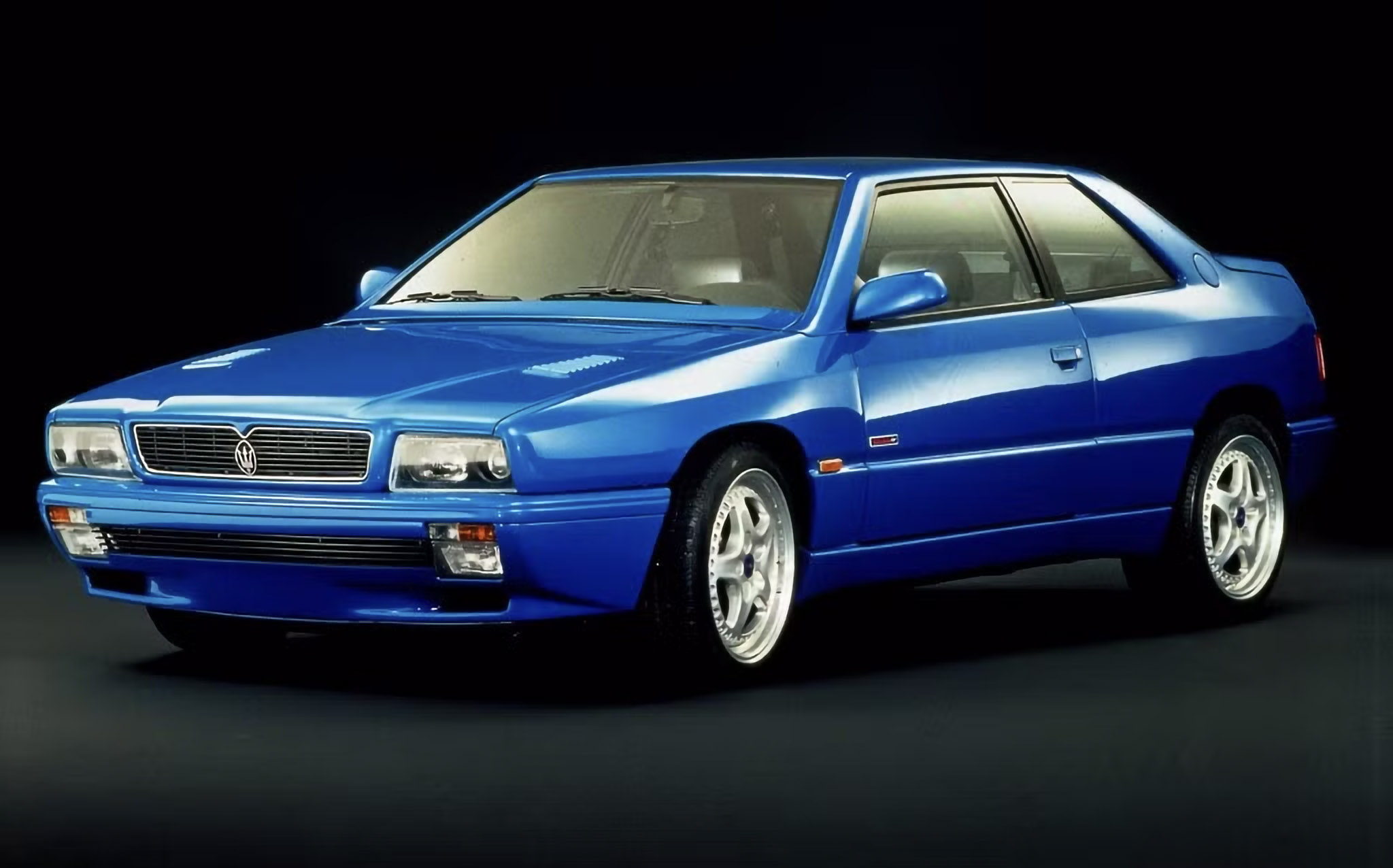
Engine overheating, electrical failures, interior parts falling off, and rust demonstrated that the first Biturbos were rushed to production without enough development. Fortunately, the car was improved steadily over the years, with a bewilderingly complex number of model name changes each time the car was revised.
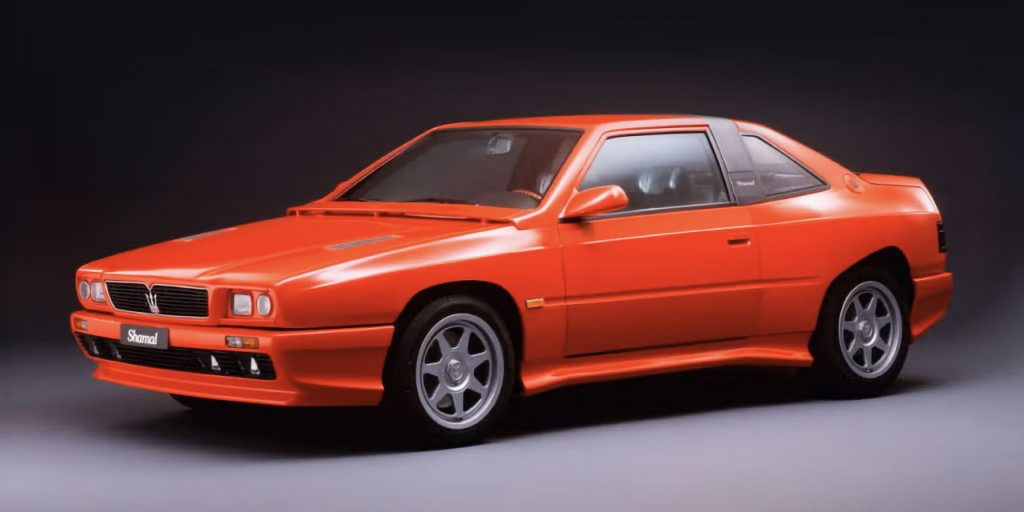
The Biturbo platform would be developed late in its life into two other variants, the Shamal and the Ghibli II. Both of these cars could deserve their own articles, but the Shamal’s main appeal is its aggressive styling from Marcello Gandini while the Ghibli II took the best of the Shamal and commercialized it for more mass appeal. In general, most would agree the Ghibli II is the best of the Biturbo-platform cars in terms of style and performance.
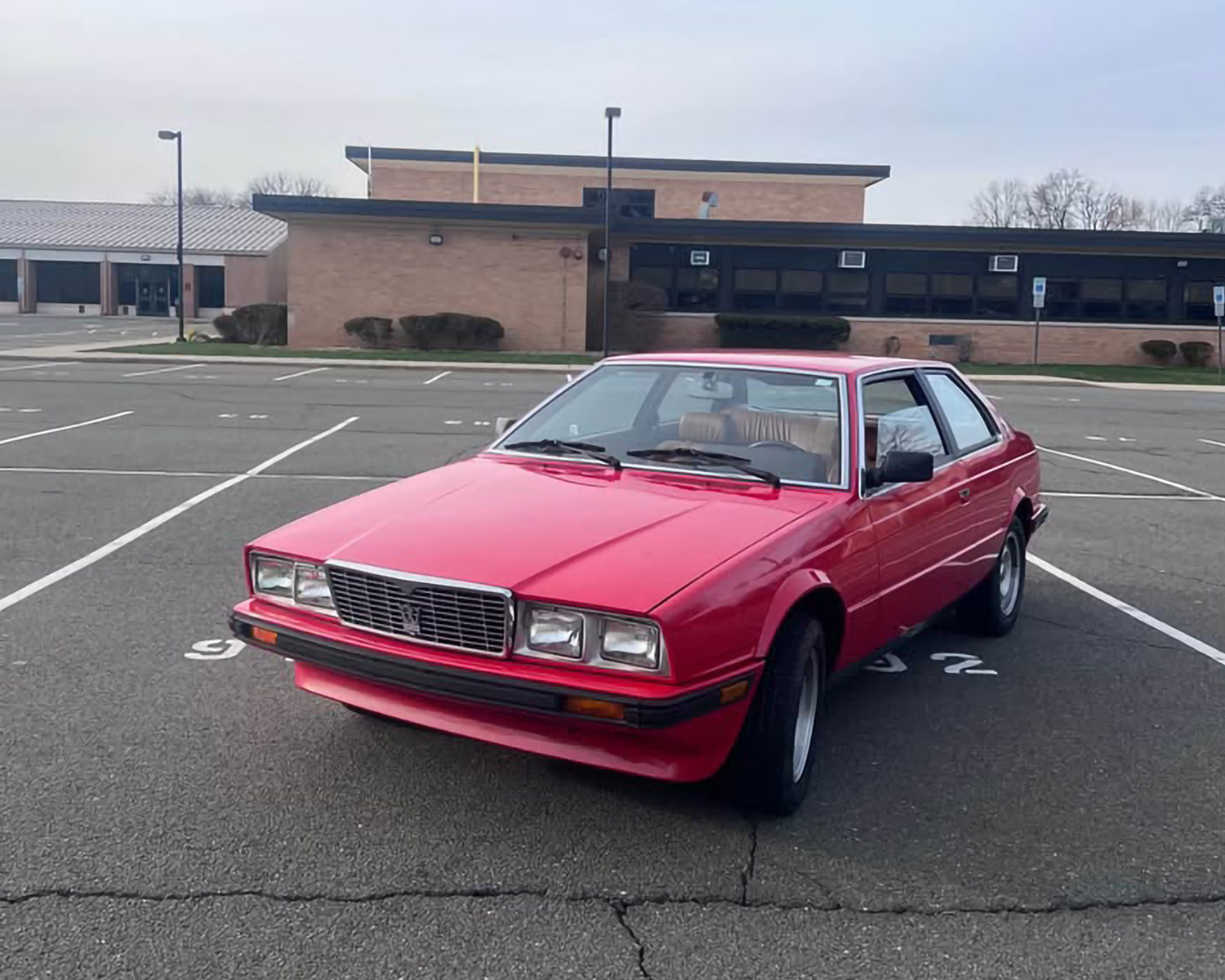
Today’s Good Find Friday car is a 1985 Maserati Biturbo finished in red with a brown leather interior. It’s offered by the seller on Facebook Marketplace in Oradell, New Jersey for $10,000.
If you like boxy 80’s cars, this car should appeal to you. Said to have just 13,000 miles, the exterior condition seems to support that, though the photos on Facebook don’t cover much of the areas of concern. The paint is shiny and the trim looks good from a distance. Exterior features on the car include four rectangular headlights, aerodynamic front air dam, integrated bumpers, chrome trim, and prominent Maserati badging.
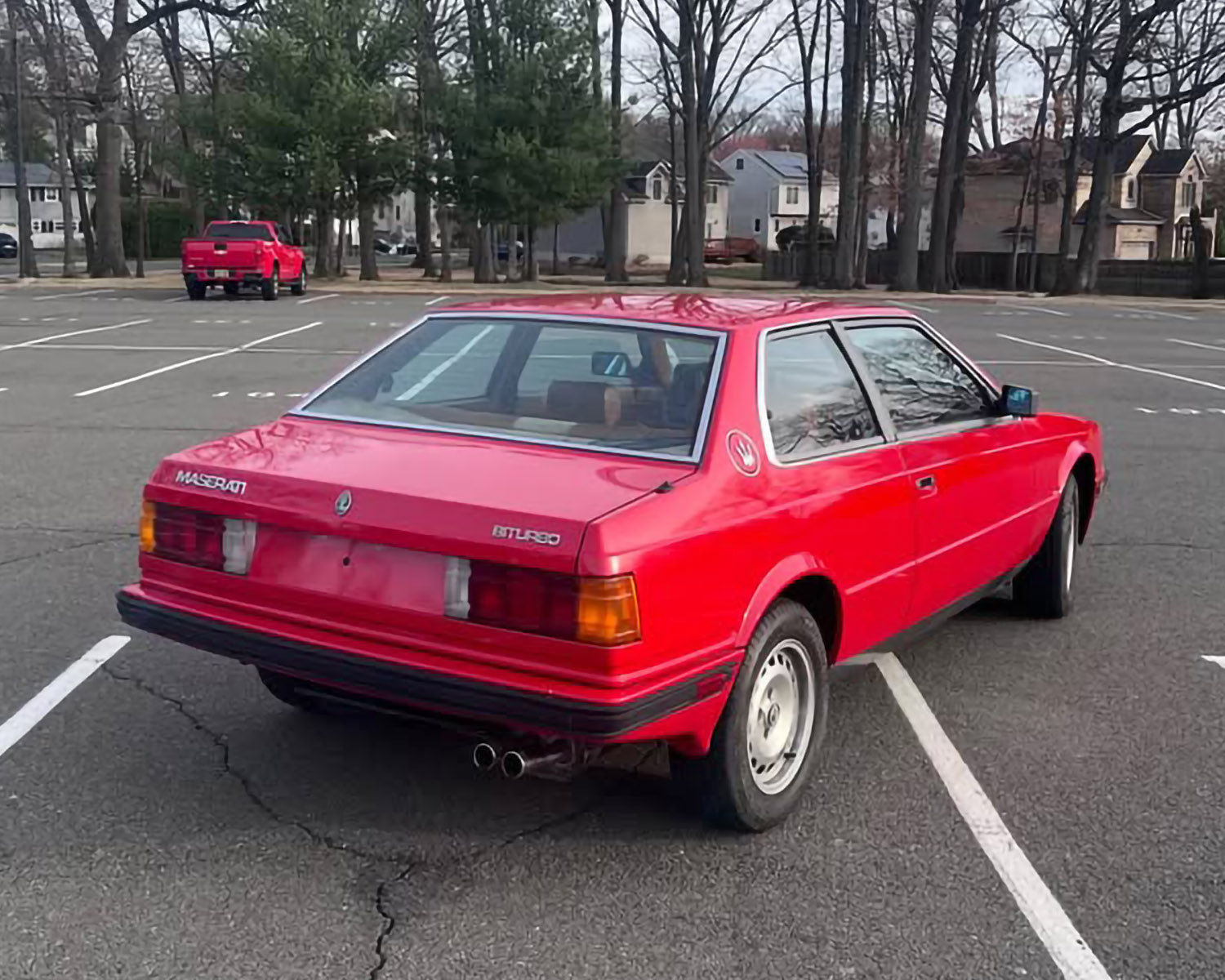
The interior of the car presents very nicely based on the photos, with deeply cushioned, real leather seats in a lovely mottled finish, burl wood trim on the dash and doors, and no obvious major tears or issues. The door panels still wear plastic covers over their suede inserts. The biggest issue appears to be a sagging headliner, but that’s common on many older cars.
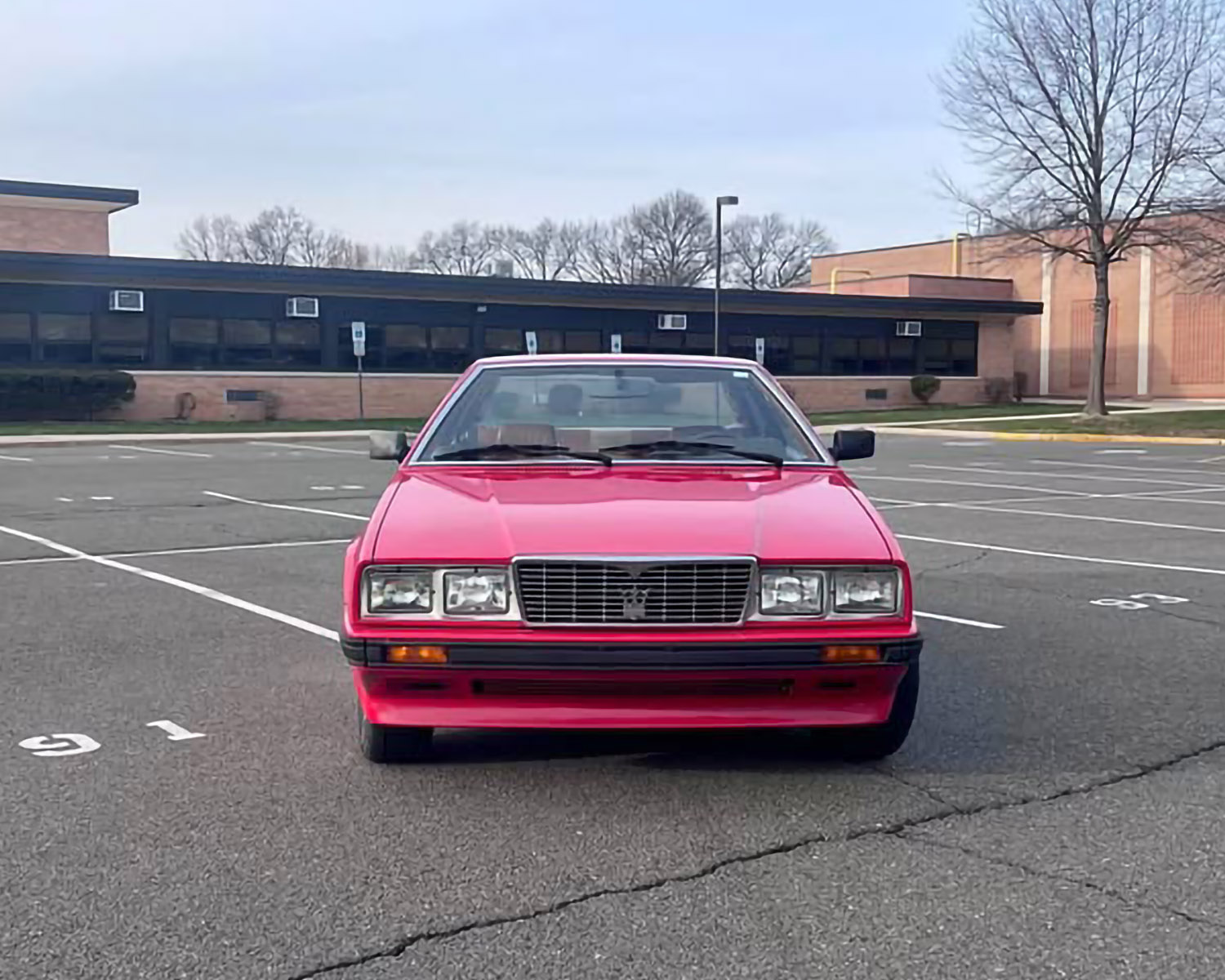
One plus of this example is it’s got a manual transmission. So many of these I see for sale look like amazing buys, until I see the lever for an autobox in the center console. The gearbox is a 5-speed ZF unit with a dog-leg first.
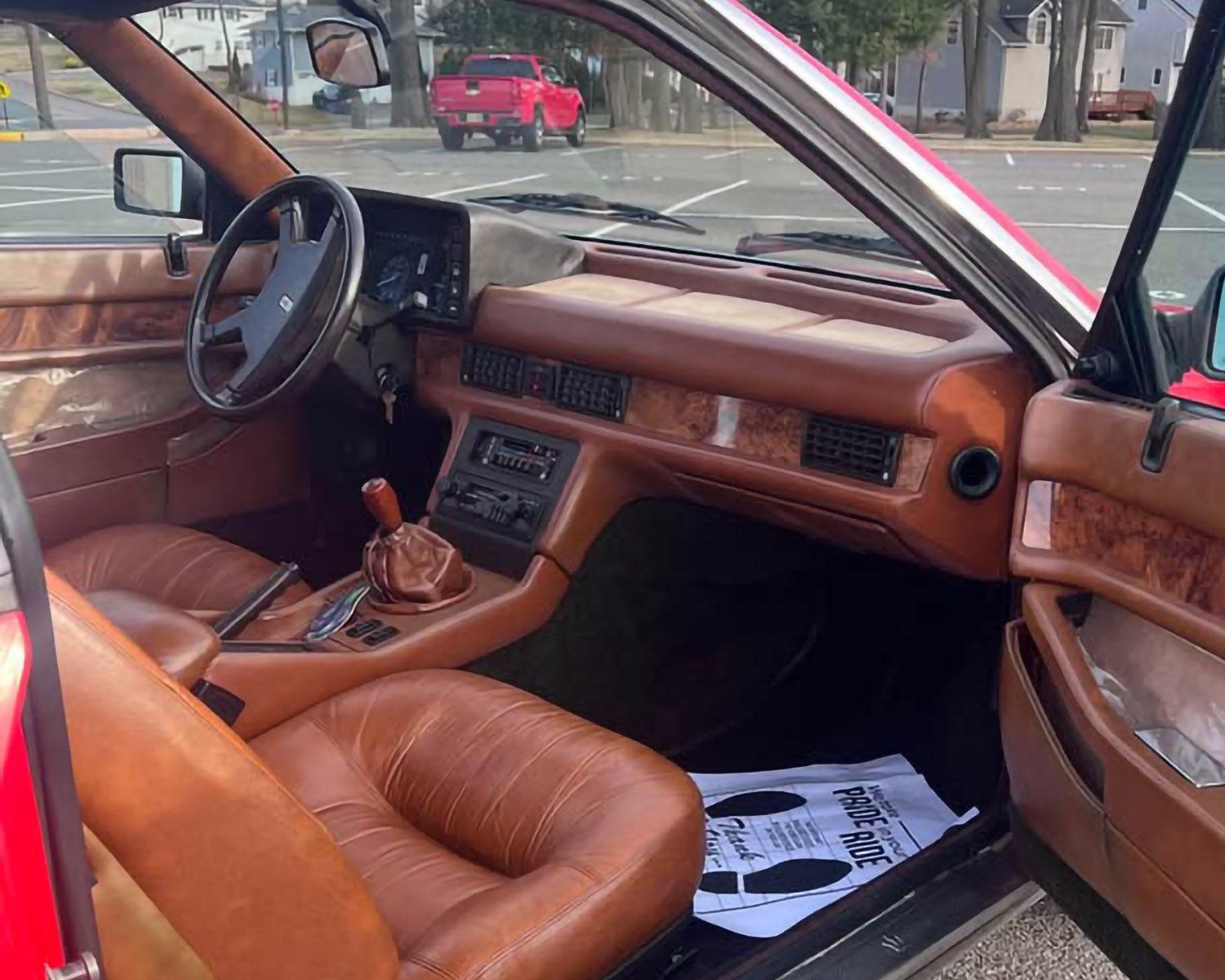
I wouldn’t call the engine bay of a Biturbo “impressive” nor is this example particularly clean. A thorough detailing would go a long way here, but it looks like everything is intact save for one of the intake pipes having been fixed with some duct tape. The V6 engines in these were produced in Modena, which is a good trivia note to share at car shows, with the bodies built at a factory near Milan. Still cool. Being a 1985 car, this engine should have water-cooled turbos, air-to-air intercoolers, and the better carburetors compared to the 1986 models, which proved problematic.
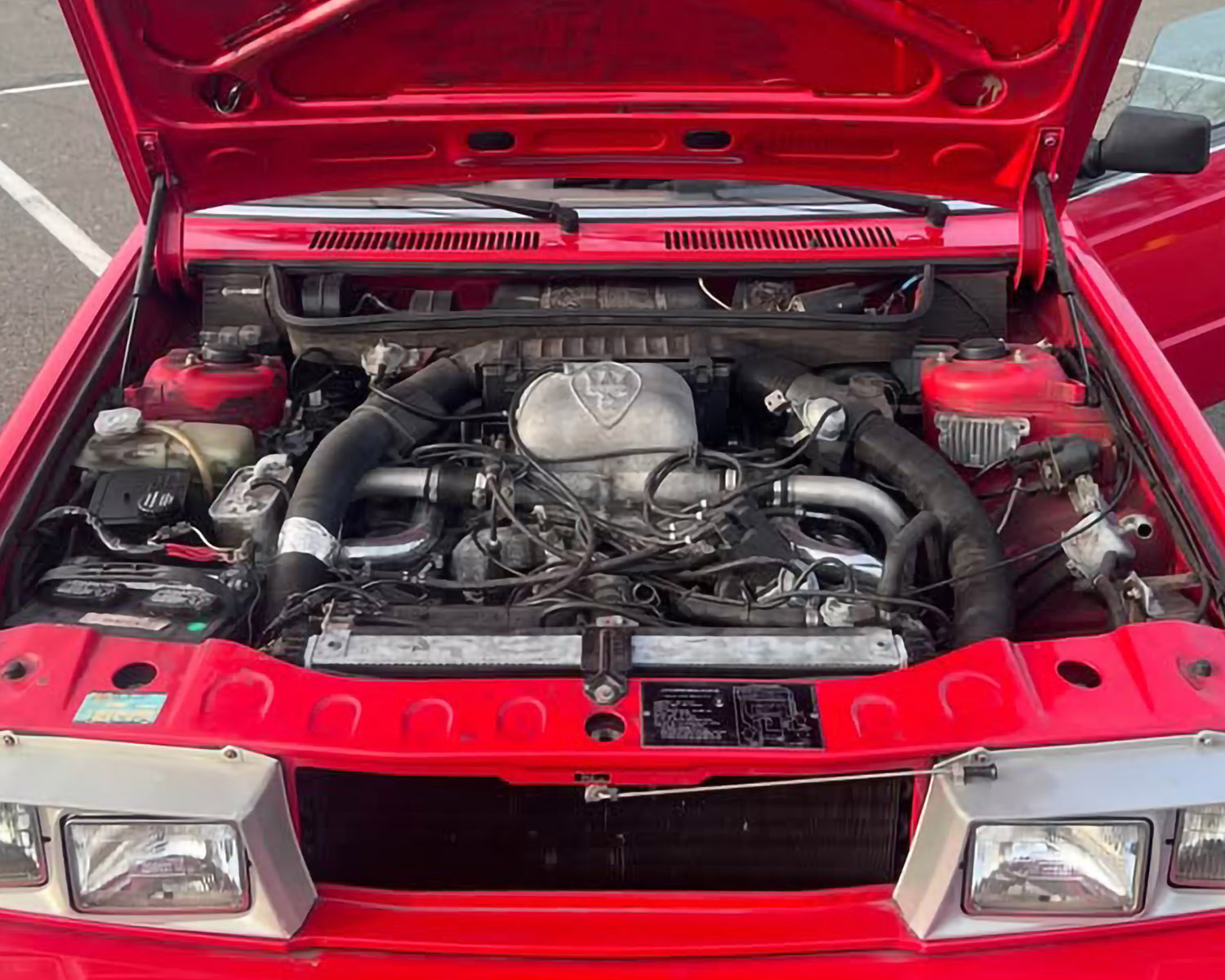
No undercarriage shots are included, nor are any closeups of the wheel arches, rocker panels, or the like. The subframes on these loved to rot out, so the fact that this car is in Jersey doesn’t inspire much confidence. Even 13,000 miles of salt-road state driving can kill Italian metal. Obviously, an in person viewing of the car would be key to study the underside and verify the owner’s claims as to the running condition.
Ranked number 28 in the BBC book Crap Cars, the BiTurbo never got much love, but it did race in-period in the World Touring Car Championship, so it’s got race credibility.
Market Snapshot
The average price for a Maserati Biturbo, across all years of the platform, is currently $14,000. Like everything, the market peaked in 2022 and has steadily declined since. It should be noted that this average includes all models excluding the Shamal and Ghibli II from 1982 to 1985.
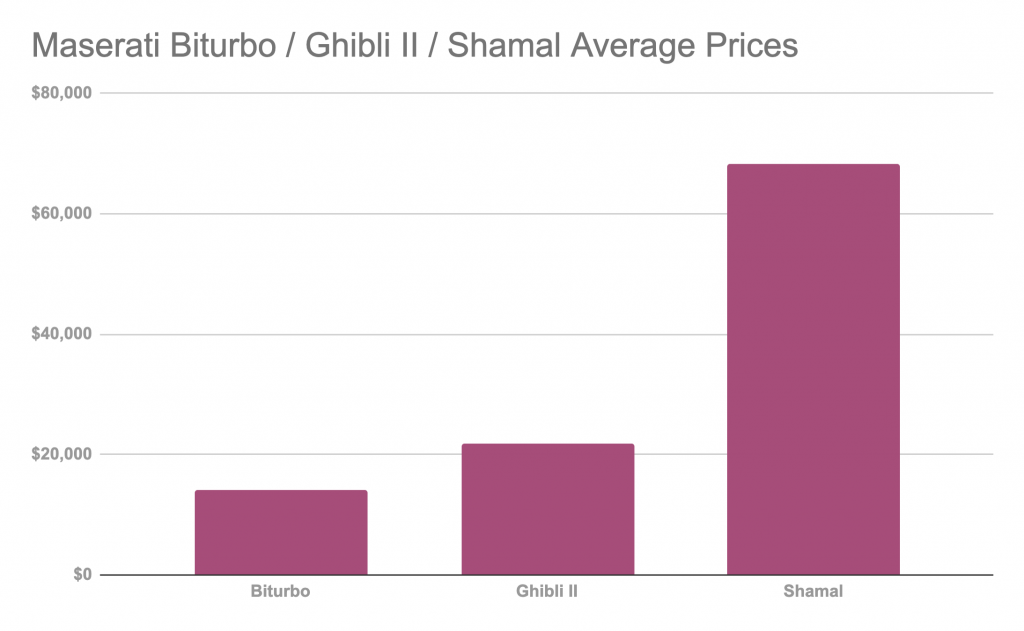
Few of these cars seem to be sold at auction, with most changing hands via private sales and many available in Europe. As can be seen in the chart above, the Shamal is far and away the most valuable car built on the Biturbo’s platform. $70,000 opens up a lot of collector car opportunities beyond the Shamal, though! Unusual, Italian luxury sporting cars under $10,000 are comparatively pretty rare.
Final Thoughts
It’s easy to say “this car is cheap for a reason” and you’d be correct. You might also say there are more reliable ways to spend $10,000 and that would also be true. For me, the car hobby is about more than simple ownership and driving. It’s multifaceted, and includes other rewarding activities such as research, maintenance, and improvement. Much of the fun is in the satisfaction of solving problems and with a Maserati Biturbo, you’re certain to have problems to solve. It might be the cheapest entry into Italian exotic ownership and for that reason it’s worth considering.
What do you think? Good buy, or bad idea? Let me know in the comments!
Wolf and Mare provides car finding, appraisal and auction services for sellers and buyers of collector European cars. We also provide importation services. Give us a call or drop us a line!

